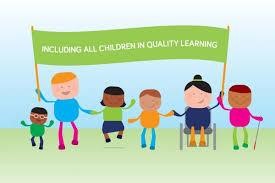UNIT 7: Introduction
UNIT 7: Special Needs and Inclusive Education
Key Words, Phrases and Definition
|
Key Words/Phrases |
Definition |
|---|---|
|
Examination accommodation |
An arrangement that provides specific, targeted support to a learner with Special Educational Needs or Disabilities during examinations. |
|
Differentiation |
Meeting the needs of all learners in the teaching and learning process. Teachers include differentiation in their lesson plans and in their practice, differentiating what they teach, how they teach, how they organise the learning space, the resources that are suitable for different learners' needs and by using continuous assessment and intervention to close any learning gaps that a learner might have. |
|
Equality |
Being of the same or similar level, especially in status, rights, and/or opportunities. |
|
Equity |
Being fair; giving equal treatment to everyone. |
|
Impairment |
A weakness or damage e.g. visual impairment which causes damage to or weaknesses in sight. |
|
Modification |
A change made to something so it works/fits better. |
|
Stigmatise |
Treat someone unfairly and exclude them due to a Special Educational Need or Disability |
Introduction

This unit introduces Special Educational Needs (SEN) and Inclusive Education and the importance of considering how to support all learners in your classroom. The unit describes some of the most common Special Educational Needs which learners in your classroom may have. We also discuss the importance of the teacher’s attitudes towards learners with different SEN and we will reflect on the impact that negative attitudes have on those learners.
You will learn about three types of differentiation strategies which you can use to help support all learners at the same time during your lessons, including those with Special Educational Needs (SEN).
Last, but not least, we will look at an Individual Education Plan (IEP) which is an important tool that Special Educational Needs and Disabilities specialists and teachers of learners with SEN should use to help their learners with Special Educational Needs and Disabilities. An IEP is designed to support learners with SEN to make progress alongside their classmates, in an inclusive learning environment.This unit covers how Inclusive Education links to the Competence Based Curriculum, some of the strategies that you can use in the classroom and gives examples of inclusive education in practice.
Source: https://www.unicef.org/northmacedonia/reports/inclusive-education-definition-and-classification-disability.
How this unit links to the Competence Based Curriculum
Article 26 of the Universal Declaration of Human Rights states that: “Everyone has the right to education, which shall be free and compulsory. All are entitled to all the rights without discrimination of any kind such as race, colour, sex, birth or any status”.
In agreement with the Universal Declaration of Human Rights, the national curriculum of Rwanda is competence based and inclusive in nature. Equity and inclusiveness are two of the essential “Curriculum Values” of the Competence Based Curriculum (CBC), meaning that they are integrated across all subjects and at all levels. The CBC directs schools “to ensure inclusiveness so that every individual is valued and there are high expectations of every learner”.
Furthermore, learning must be organised so that “all learners thrive...learners with disabilities, learners with special educational needs, regardless of their background.’’
All learners have the right to attend school and to access education. This requires that the needs of all learners are “considered and accommodated” so that they can all learn as well as possible.
Inclusion must have the following ingredients in order to be successful:
- Teachers with positive attitudes
- A way of adapting learning resources to suit all needs
- Differentiation of teaching/learning methods
- Working effectively together
